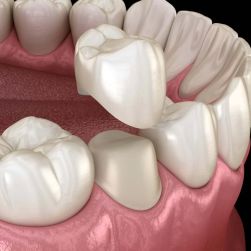How I Found the Right Dental Insurance With Pre-Existing Conditions
I remember the sinking feeling I had when a dentist told me I needed ongoing periodontal treatment and possibly future implants. With a history of gum disease and a few root canals already behind me, I knew I wasn’t the ideal candidate most insurance companies were looking for. But I also knew I couldn’t afford to go without coverage. This is how I navigated the tricky world of dental insurance in the U.S. with pre-existing conditions.
1. Knowing What Qualifies as a Pre-Existing Dental Condition
The first step was understanding how insurers define “pre-existing.” Typically, it refers to any condition that was diagnosed or treated before your current plan begins. This can include anything from cavities and crowns to more advanced issues like periodontitis or missing teeth.
1.1 The Impact of Prior Dental History
Because I had ongoing periodontal maintenance appointments and missing molars, some plans automatically excluded coverage for those issues. That meant I had to dig deeper into plan details and ask direct questions before enrolling.
1.2 Asking the Right Questions
When I called providers, I didn’t just ask, “Do you cover gum disease?” Instead, I asked: “Will treatment for previously diagnosed periodontitis be covered, and if so, after how long?” This helped me avoid vague answers and misleading promises.
2. Comparing Dental Plans: What to Watch For
Not all plans treat pre-existing conditions the same way. Some had full exclusions, while others imposed waiting periods or reduced reimbursement rates for ongoing issues.
2.1 Understanding Exclusions
Some plans simply won’t cover any treatment that started before the policy effective date. I avoided these, as they wouldn’t pay for the procedures I needed most. Others allowed continuation of care after a 6- to 12-month waiting period, which was a much better fit for my situation.
2.2 The Importance of Reading the Fine Print
It’s not enough to see “coverage for periodontal care” listed as a benefit. You need to confirm whether it includes ongoing maintenance, scaling and root planing, and follow-up evaluations. I once found a plan that looked perfect, only to find out it didn’t include anesthesia for deep cleanings — a deal-breaker for me.
3. How I Used Employer Benefits and Supplemental Plans
My employer-sponsored dental plan offered basic coverage, but it had a strict annual maximum of $1,000 — which barely covered two periodontal visits and a filling. I needed more help, so I turned to supplemental dental insurance to fill in the gaps.
3.1 Stacking Plans for Better Coverage
I purchased a supplemental plan that covered major dental services and had a lower waiting period. Between the two plans, I could schedule treatments more strategically and spread costs across multiple benefits.
3.2 Using FSAs and HSAs for Out-of-Pocket Costs
Flexible Spending Accounts and Health Savings Accounts became my lifeline. I put aside pre-tax dollars to pay for non-covered services like special fluoride treatments and laser gum therapy. These accounts gave me more control and reduced my financial burden.
4. Finding Providers Who Understand Chronic Dental Needs
Not every dentist is prepared to work with patients who have chronic conditions. Some clinics I visited early on seemed more focused on upselling cosmetic treatments than managing long-term care. Eventually, I found a periodontist who worked closely with insurance companies and helped me time procedures for maximum reimbursement.
4.1 Building a Long-Term Care Plan
We created a multi-year care plan that prioritized essential treatments first and spread out the costs over time. This made it easier to align treatments with plan coverage limits and avoid financial surprises.
4.2 Requesting Pre-Treatment Estimates
Before scheduling any major work, I always requested a pre-treatment estimate from my insurance provider. This gave me a clear breakdown of what would be covered and what I’d need to pay out of pocket. It also helped avoid billing disputes later.
5. What I Learned From Trial and Error
Not every plan or provider will work for someone with chronic dental needs. I had to switch insurers once after realizing they didn’t cover ongoing periodontal maintenance. Another time, I made the mistake of skipping open enrollment and ended up paying out of pocket for an emergency extraction.
5.1 Don’t Wait Until You’re in Pain
One of the biggest mistakes I made was waiting until I was in discomfort to shop for coverage. The truth is, the best time to enroll in a comprehensive dental plan is when you’re not in crisis. It gives you time to evaluate options and wait out any coverage delays.
5.2 Consider Dental Discount Plans as a Backup
When no insurer would cover my immediate needs, I enrolled in a dental discount plan. While it wasn’t insurance, it offered negotiated lower rates with participating dentists. It was enough to get the work done without draining my savings.
6. Where to Go From Here
If you’re dealing with pre-existing dental issues in the U.S., know that you’re not alone — and you’re not out of options. Resources like Dentistry Toothtruth offer plan comparisons, provider recommendations, and even personal consultations to help people like us get the care we need without going bankrupt. Don’t give up — the right plan is out there, and it’s worth the effort to find it.







